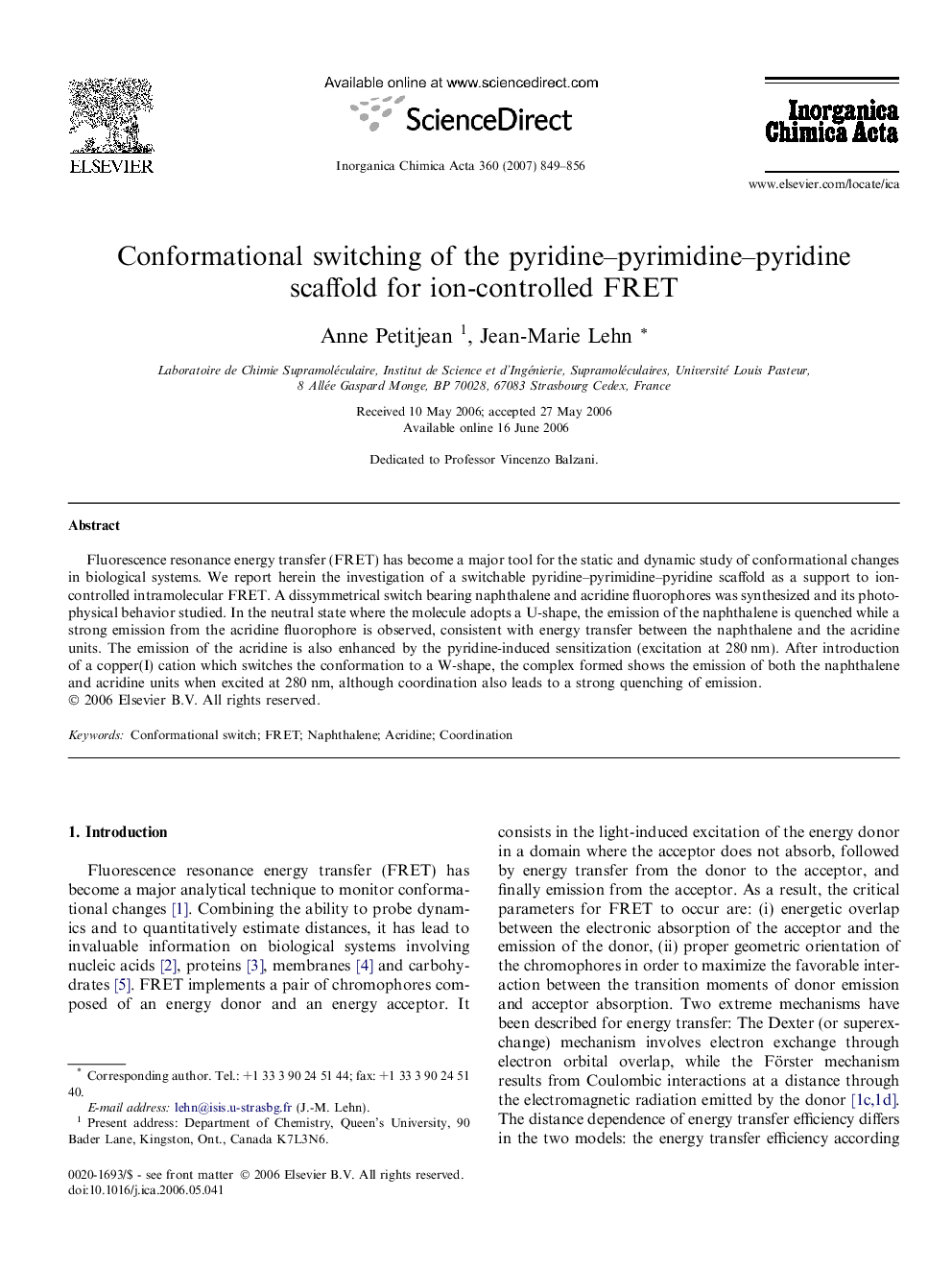| Article ID | Journal | Published Year | Pages | File Type |
|---|---|---|---|---|
| 1312761 | Inorganica Chimica Acta | 2007 | 8 Pages |
Fluorescence resonance energy transfer (FRET) has become a major tool for the static and dynamic study of conformational changes in biological systems. We report herein the investigation of a switchable pyridine–pyrimidine–pyridine scaffold as a support to ion-controlled intramolecular FRET. A dissymmetrical switch bearing naphthalene and acridine fluorophores was synthesized and its photophysical behavior studied. In the neutral state where the molecule adopts a U-shape, the emission of the naphthalene is quenched while a strong emission from the acridine fluorophore is observed, consistent with energy transfer between the naphthalene and the acridine units. The emission of the acridine is also enhanced by the pyridine-induced sensitization (excitation at 280 nm). After introduction of a copper(I) cation which switches the conformation to a W-shape, the complex formed shows the emission of both the naphthalene and acridine units when excited at 280 nm, although coordination also leads to a strong quenching of emission.
Graphical abstractThe conformational control of the pyridine–pyrimidine–pyridine scaffolds allows for efficient energy transfer between naphthalene and acridine substituents. The coordination-induced conformational change restores the emission of the naphthalene moiety, although significant quenching (by the ion) is observed.Figure optionsDownload full-size imageDownload as PowerPoint slide
